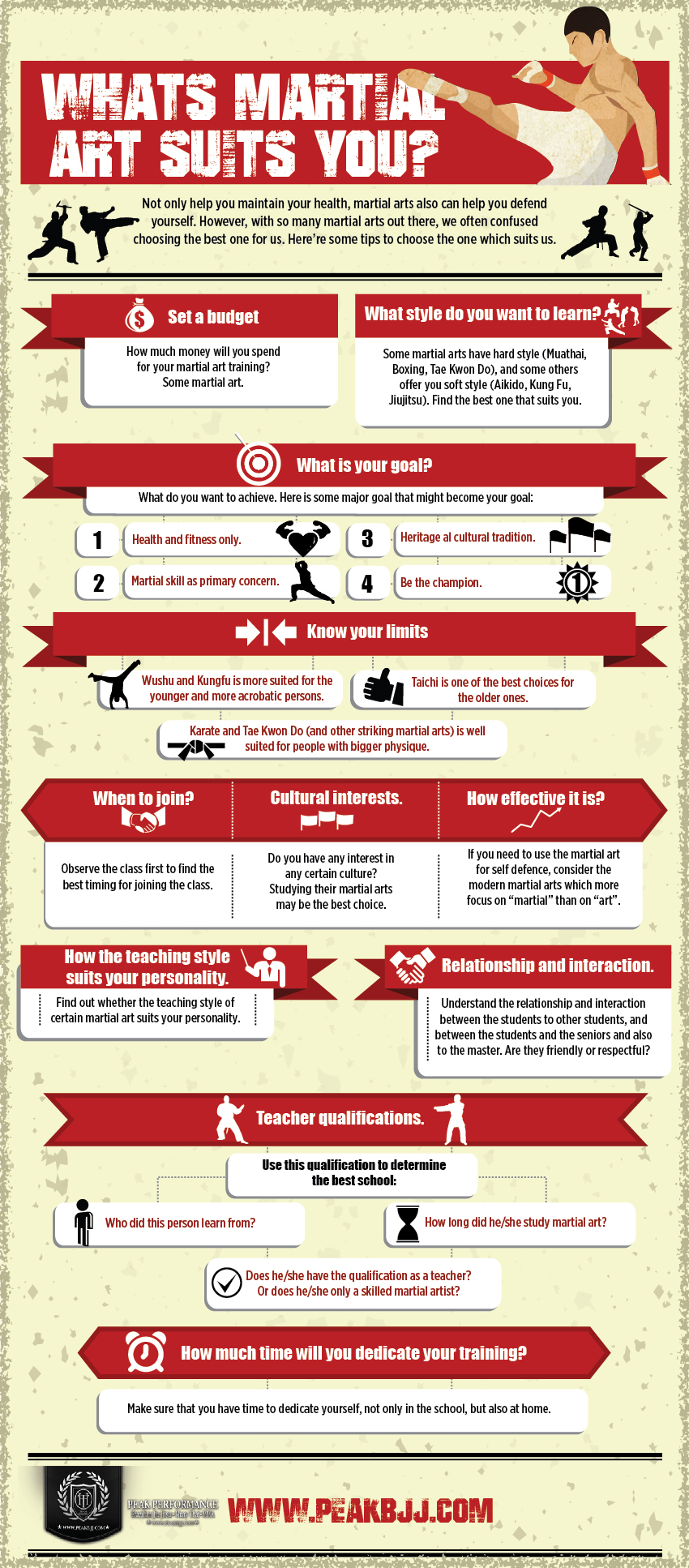The Advancement Of Fight: An Overview To Martial Arts Weapons And Methods
The Advancement Of Fight: An Overview To Martial Arts Weapons And Methods
Blog Article
Team Writer-Barrett Brinch
Discover the ancient origins of martial arts weapons training, forming fight methods and self-control. Ancient civilizations like Egypt and China refined their skills with different weapons like bows, personnels, swords, and nunchaku. Given through generations, standard tools such as katana, nunchaku, bo team, and sai provide one-of-a-kind characteristics and strategies. Modern tool training incorporates traditional principles with modern methods, focusing on speed, accuracy, and flexibility. Boost your fight skills by learning more about the rich background and varied methods of martial arts weapons.
Ancient Origins of Defense Training
Discovering the ancient origins of tools training exposes the fundamental concepts that have actually shaped martial arts methods for centuries. In ancient worlds, weapons training had not been just a method of fight but also a way to instill technique, honor, and regard. The earliest types of weapons training can be mapped back to ancient Egypt, where soldiers were learnt the art of archery and spear combat. These skills were essential for shielding the kingdom and ensuring its success.
As worlds advanced, so did the methods and tools utilized in training. In old China, martial arts professionals honed their abilities with weapons like the personnel, sword, and nunchaku. These weapons weren't only devices for protection yet additionally signs of toughness and proficiency. The training approaches were passed down from generation to generation, preserving the traditional methods and approaches.
With the research of old tools training, modern martial musicians acquire a much deeper understanding of the technique and dedication called for to understand these abilities. By recognizing guila kajukenbo of old warriors, practitioners continue to maintain the ageless principles of martial arts.
Conventional Martial Arts Weaponry
The development of martial arts weaponry from old civilizations to modern practice highlights the long-lasting relevance of conventional tools in fight training. Conventional martial arts weaponry consists of a large range of tools such as the katana, nunchaku, bo personnel, and sai. These weapons have actually been passed down through generations, each with its special attributes and strategies.
The katana, a traditional Japanese sword, is recognized for its intensity and accuracy in strikes. Nunchaku, including 2 sticks attached by a chain or rope, require skilled managing for reliable combat. The bo personnel, a lengthy stick generally constructed from wood, is flexible in both assault and protection maneuvers. The sai, a three-pronged metal tool, is experienced at capturing and blocking opponents' strikes.
Training with these traditional weapons not only refines physical battle abilities but also cultivates technique and focus. By grasping the techniques of conventional martial arts weaponry, practitioners can personify the rich history and culture of martial arts while improving their battle efficiency.
Methods for Modern Tool Training
Modern tool training methods highlight adaptability and efficiency in fight scenarios, blending conventional principles with modern tactics for maximum effectiveness. To master https://www.theintelligencer.com/news/article/Glen-Carbon-martial-arts-classes-look-to-empower-17588073.php -day tool training, focus on enhancing your rate, precision, and adaptability. Practicing with weapons like blades, batons, and guns requires mastering strategies that focus on swift strikes and specific defensive maneuvers.
Footwork plays a crucial role in modern-day weapon training, allowing you to keep proper range from your challenger and swiftly change between offending and protective stances. By incorporating liquid activities and fast maneuvering drills into your training program, you can successfully evade assaults and launch counterblows with accuracy.
Furthermore, contemporary weapon training stresses the significance of situational understanding and strategic thinking. Understanding just how to analyze dangers, identify susceptabilities, and exploit openings in your challenger's protection is important for success in battle circumstances. By sharpening your analytical skills and developing a tactical frame of mind, you can defeat enemies and emerge victorious in testing scenarios.
Conclusion
So there you have it! You've learned about the old beginnings of weapons training, discovered standard martial arts weaponry, and uncovered strategies for modern-day weapon training.
Now head out there and practice what you've discovered, and come to be a master of martial arts tools! Remember, the opportunities are endless, and with dedication and technique, you can become a weapon-wielding ninja quickly!
